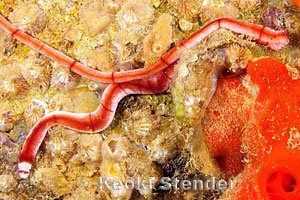
These worms, belonging to the phylum Nemertea, can vary wildly in size and color. Some can be just a few centimeters long, while others can stretch over 30 meters! They’re more than just pretty faces, too; their unique biology and behavior make them interesting subjects for scientific study. From their predatory habits to their ecological roles, ribbon worms offer valuable insights into the health of marine environments. So, grab a cup of coffee, and let’s dig deeper into what scientists are studying about ribbon worms and why it’s important.
What Are Ribbon Worms?
First things first, let’s clarify what ribbon worms are. These creatures are long, slender, and often brightly colored, resembling ribbons floating through water. They have a unique body structure, with a gut that runs the length of their body and specialized organs that help them capture prey. Ribbon worms are primarily marine animals, found in various environments from shallow coastal waters to the deep sea.
The most striking feature of ribbon worms is their proboscis. This is a long, extendable organ that can quickly capture prey. When threatened, some species can even use their proboscis to inject toxins into potential predators. This remarkable adaptation allows them to survive and thrive in various marine habitats, showcasing their evolutionary niche in the ecosystem.
The Importance of Ribbon Worms in Ecosystems
So, why should we care about ribbon worms? Here’s the thing: they play a crucial role in their ecosystems. Ribbon worms help control populations of small marine animals, such as crustaceans and other invertebrates. By keeping prey populations in check, they contribute to a balanced food web. Imagine a scale that can tip if one side gets too heavy; ribbon worms help maintain that balance in their watery world.
Additionally, ribbon worms are essential indicators of environmental health. They are sensitive to changes in their habitats, such as pollution or climate change. Scientists often study their populations to gauge the overall health of marine ecosystems. If ribbon worm numbers decline, it could signal larger issues, like habitat degradation or the impacts of human activity.
Research Focus: Behavior and Ecology
One area of research focuses on the behavior and ecology of ribbon worms. Scientists study how these worms hunt and interact with their surroundings. Observing their predatory behaviors can reveal a lot about their roles in the marine food chain.
For example, researchers have found that ribbon worms can consume a surprising variety of prey, including fish eggs and other small invertebrates. This adaptability indicates their resilience in changing environments. They can even shift their diet based on what’s available, showcasing their ability to survive in various conditions. Studying these behaviors helps scientists understand how ribbon worms contribute to nutrient cycling and energy transfer in their ecosystems.
Ribbon Worms and Climate Change
Climate change poses a significant threat to marine life, and ribbon worms are no exception. As ocean temperatures rise and water chemistry changes, these creatures may experience shifts in distribution and behavior. Scientists are particularly interested in how these changes will affect their populations and, consequently, the ecosystems they inhabit.
Research shows that some species of ribbon worms are moving to cooler waters as temperatures rise. This migration can disrupt local ecosystems and predator-prey dynamics. By monitoring ribbon worm populations, scientists can gain insights into how climate change is altering marine environments.
Conservation Efforts Involving Ribbon Worms
As scientists uncover more about ribbon worms, there’s a growing push for their conservation. Protecting these creatures means safeguarding the ecosystems they help maintain. Marine conservation efforts often focus on habitat protection, pollution reduction, and responsible fishing practices.
For instance, if we implement marine protected areas, we can ensure that ribbon worms and their habitats remain safe from human disturbance. By conserving their environments, we’re not just saving a species; we’re preserving the intricate web of life in our oceans.
Ribbon Worms in Biomedical Research
Interestingly, ribbon worms also have potential in biomedical research. Some species produce unique proteins that scientists think could lead to breakthroughs in medicine. For example, researchers are investigating the potential of ribbon worm toxins in developing new treatments for pain or even cancer.
By studying these unique biological features, scientists are hoping to unlock new therapeutic possibilities. It’s a great example of how marine research can have far-reaching impacts beyond just understanding ecosystems. You never know where the next medical breakthrough might come from!
Future Directions in Ribbon Worm Research
As research on ribbon worms continues to evolve, scientists are exploring new technologies and methodologies. Advances in DNA analysis and imaging techniques allow for more in-depth studies of their genetics and behavior. These developments open doors to understanding their evolutionary history and ecological roles even better.
In addition, collaborative projects between marine biologists and ecologists aim to create comprehensive studies that link ribbon worms with other marine life. Such holistic approaches can provide a clearer picture of ecosystem health and functionality.
Closing off this journey into the world of ribbon worms, it’s clear that these creatures are more than just wiggly inhabitants of our oceans. They’re integral to marine ecosystems, important indicators of environmental change, and even potential contributors to medical science. By studying ribbon worms, scientists are not just learning about these fascinating creatures, but also about the health and future of our oceans. It’s a reminder of how interconnected life is on our planet, and how even the smallest beings can make a big impact!
